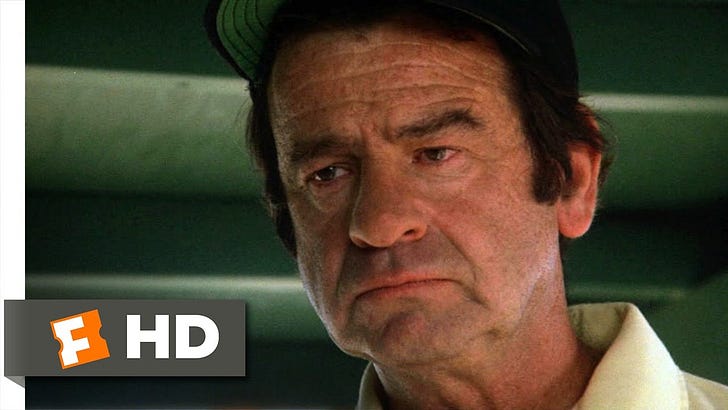I’m repeating things from the past these days because I’m dedicating more of my mental space to focus on goals that don’t include this avocation. But there are a lot of healthy subtexts going on. One of them is my occasional role as a mentor aiming to buck up the youth of today by showing them how to not be so stuck up. As a semi-serious mouthpiece for GenX, I think of examples of how we learned resilience and all that sorta thing.
In those days we got cursed out. So we cursed back. But as this scene illustrates, we weren’t emotionally stupid, and we didn’t let adults get away with it. Two great examples from the film.
These days we don’t even let kids razz.
Yes, Little League Baseball’s enforcement of its no-taunting rule (which includes prohibiting razzing the pitcher or batter) appears to have become stricter after the 1980s. While the league has always emphasized good sportsmanship, the specific ban on negative chatter (such as coordinated team chants meant to distract opponents) became more formalized in the 1990s and early 2000s.
Key Developments:
1. Pre-1990s: Razzing and team chatter were still common in Little League and other youth leagues, with players often shouting phrases to distract opponents.
2. 1990s-2000s: As youth sports culture shifted toward positive reinforcement and anti-bullying policies, leagues cracked down on taunting, including razzing pitchers or batters. This was part of a broader movement in youth sports to emphasize respect, inclusion, and good sportsmanship.
3. 2002-2004: Little League International issued explicit rules against taunting, including “negative chatter” directed at opposing teams. Umpires were given clearer authority to stop it.
By the mid-2000s, many local leagues had adopted zero-tolerance policies on unsportsmanlike behavior, including coordinated chants intended to distract pitchers or hitters.
There it is.




